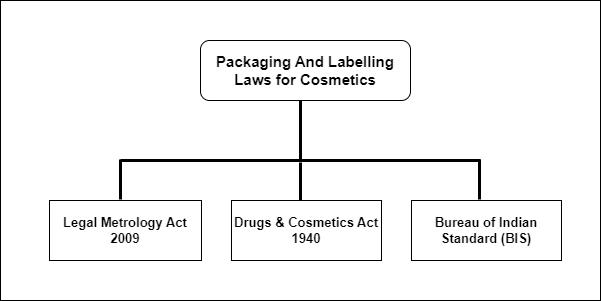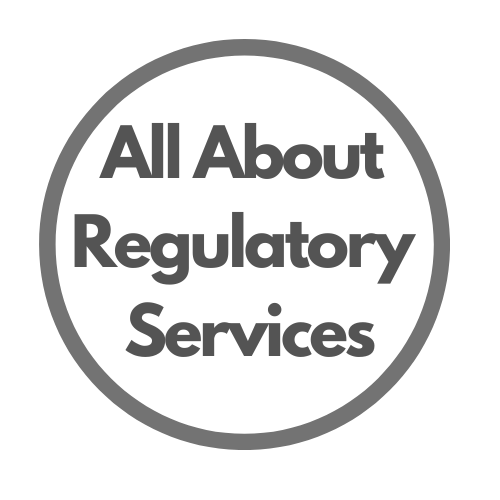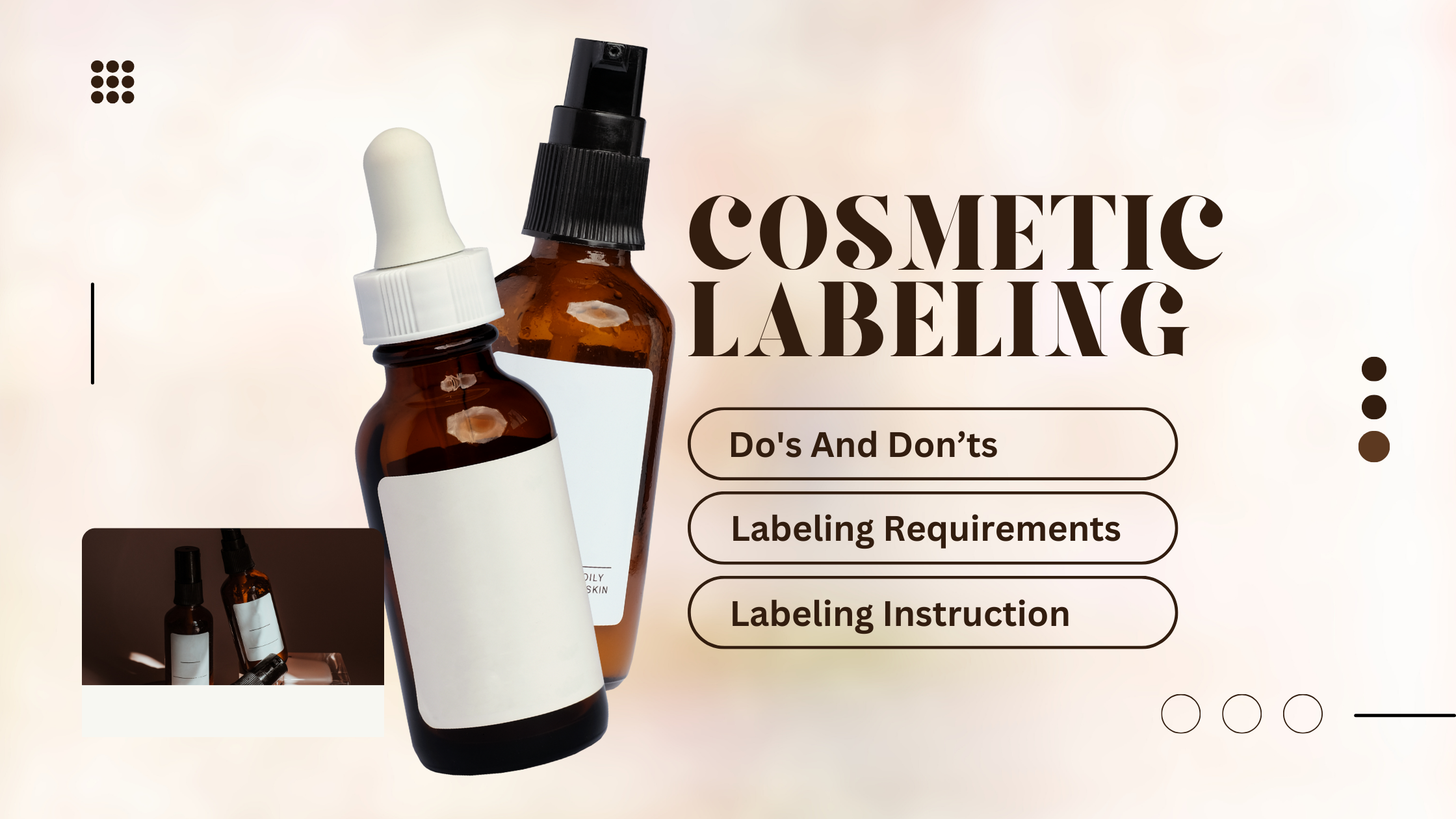Cosmetics Labeling Requirements for Import Registration
Under Rule 21 of the Drugs and Cosmetics Act of India, stringent guidelines are established for overseas brands and importers concerning cosmetic labeling and packaging. Compliance involves submitting approved format labels or regulatory artworks to CDSCO as part of the application process for approval. This ensures adherence to regulatory standards and facilitates smoother processing.
Cosmetics Packaging And Labeling In India
Packaging encompasses the art of crafting and producing the container or wrapper for a product, while labeling provides crucial verbal details about both the product and its seller. In today’s competitive market, the significance of Packaging and Labeling cannot be overstated; they serve as potent marketing tools, enticing consumers and shaping their perceptions. However, amidst this importance lies a risk: unscrupulous sellers may attempt to deceive or mislead consumers through deceptive packaging and labeling practices. Thus, ensuring transparency and integrity in packaging and labeling is paramount to fostering trust and loyalty among consumers.
To safeguard consumers from exploitation and ensure transparency, the government implemented the Consumer Protection Act of 1986. This pivotal legislation delineates six fundamental rights of consumers, among which the ‘Right to Information’ and ‘Right to Consumer Education’ stand out. It’s imperative for sellers and manufacturers to uphold these rights when packaging and labeling their products. Additionally, packaging serves as a means of establishing a distinctive trademark for products, enhancing brand recognition and consumer trust.
Laws for Cosmetics Labeling And Packaging
Unveiling the regulations governing the cosmetics labeling and packaging, here are the pertinent laws you need to know:

Emphasizing the importance of standardization and fairness in commerce, The Legal Metrology Rules of 2011, enacted under section 52(2) of The Legal Metrology Act of 2009, establish comprehensive packaging regulations for packaged commodities. These rules serve as a cornerstone for ensuring transparency and consistency in product packaging across various industries.
Given the specialized nature of the study, the primary focus lies on the regulations pertinent to ‘Cosmetics’. Therefore, the applicable laws include The Drugs & Cosmetic Rules, enacted under sections 12 and 33 of the Drugs and Cosmetic Act. Additionally, adherence to supplementary labeling guidelines, as mandated by the Bureau of Indian Standards (BIS), is crucial. BIS, serving as the national standards authority of India, plays a pivotal role in formulating, recognizing, and promoting Indian Standards, ensuring the safety and quality of cosmetic products in the market.
General Requirements For Cosmetics Labeling and Packaging
Here are some general requirements for cosmetic labeling & packaging under the legal metrology (packaged commodities) rules, 2011 and drugs & cosmetics rule. The table below illustrates the main categories of cosmetic labeling contents, along with the manner in which they are declared and corresponding pictorial examples:
| Categories | Manner of Declarations |
|---|---|
| Standard or generic name of the products | – Cosmetics’ name should be visible on both the inner and outer labels – If the package contains more than one product, it is essential to list the name and quantity of each product on the package |
| Name & address of Manufacturer | – On both inner and outer labels – “Manufactured by….” Or “Packed by…” – Manufacturer Name – Provide the full address of the premises where the product was manufactured Include the name and address of the packer or importer where applicable – For small container sizes, include the name, principal place of manufacture, and the pin code |
| Date of Manufacturing | – Date of manufacture, prepacking, or import of the commodity – Rubber stamp can be used, but avoid overwriting – On both inner and outer label |
| Expiry date | – “Use before … (Month and year)”- has to be labelled or the Expiry date – On both inner and outer label |
| Net Quantity | – Standard unit of weight or measure – On outer Label – Weight of wrappers/containers excluded – “Net Quantity”- if the commodity is not likely to vary on account of environmental conditions – If likely to vary- “When Packed” – If the package capacity is 10 cubic cm or less, the quantity declaration should be made on a tag, card, tape, etc. – No Declaration required: – If the net content of perfume, toilet water, or similar products is less than 60 ml or 30 gm – Area surrounding the quantity declaration should be free from printed information. (Rule 8(1) of LM (packaging rules, 2011) – The maximum permissible error, in excess or in deficiency should be as per Schedule one of L.M. (Packaging) Rules 2011 – In case of wholesale packages, the total number/ net quantity of retail package contained |
| Retail Sale Price | – Packages containing alcoholic beverages or spirituous liquor are subject to State Excise laws – To lower the Maximum Retail Price (MRP), a sticker indicating the revised MRP inclusive of all taxes may be applied – However, this sticker should not obscure the MRP declaration by the manufacturer or packer on the package |
| Batch number | – Batch number not required- If cosmetic is of 10 grams or 25 milliliters or less. – For soaps, the month and year of manufacture may be provided in place of the batch number. |
| Warning or Caution if hazard exists | – On the inner label – Directions for sale use – Include a statement listing the names and quantities of hazardous or poisonous ingredients |
| Manufacturing License Number | Preceded by letter “M” |
| Ingredients | – Preceded by the word “INGREDIENTS” – Ingredients present in concentrations of more than 1% should be listed in descending order of weight/volume – Following that, list those with concentrations of less than or equal to 1%, in any order – Not necessary for packs containing less than 60 ml or 30 gm. |
| Registration Certificate Number (RCN) | – Only the label of imported cosmetics should display the RCN (Registration Certificate Number) of the product – The name and address of the holder of the registration certificate for marketing the product in India. |
| Consumer Care Details | – Name, address, telephone number, E-mail address – Contact information of the person who can be reached in case of consumer complaints. |
| Using Stickers | – Not permissible for altering or making declaration – Except in cases of reducing MRP, but it should not obscure the MRP declaration made by the manufacturer/packer. |
| Brown/Red or green dot | – For packages containing soap, shampoos, toothpaste, and other cosmetics and toiletries – Non-Vegetarian origin- Brown dot – Vegetarian origin – green dot. |
| ‘Not a standard pack size under Legal Metrology(Packaged commodities) Rules, 2011’ | – Specific cosmetics must be packaged in the standard quantities specified in the Second Schedule of the aforementioned rule – If packed in a size other than that prescribed in the schedule, it must be prominently labeled accordingly – Value-based packages may be sold without adhering to the specifications outlined in the Second Schedule. |
Do’s And Don’ts Declarations For Labeling Requirements for Cosmetics
Cosmetic Labeling Do’s
- Declarations must be visible on the Principal Display Panel.
- Must be clear and conspicuous.
- The retail sale price and net quantity should be painted, printed, or inscribed in a contrasting color.
- Declarations must be in either Hindi or English; other languages are also permitted in addition to these.
- If declarations are handwritten or in script form, they must be clear, unambiguous, and legible.
- If only one label is present, it should contain all the information required for both inner and outer labels.
- If there is an outer container or wrapper, it must also include all the required declarations.
- A label for making declarations may be affixed to imported packages.
- If a commodity consists of multiple components for the sale of a single commodity, all declarations must be made on the main package. Alternatively, these declarations may be provided on individual packages, with an indication on the main package.
Cosmetic Labeling Don’ts
- No individual or manufacturer is permitted to alter, obliterate, or deface any inscription or make any marks on the container, label, or wrapper of any cosmetic, unless authorized by the Licensing Authority.
- The labeling or packaging of cosmetics must not convey any false or misleading claims.
- An export package cannot be sold in India unless the manufacturer or packer has repackaged or relabeled the commodity.
- The Legal Metrology (Package Commodity) Rules 2011 do not apply to any package containing a commodity with a net content of 10 milliliters or 10 grams or less.
- If a commodity consists of multiple components for the sale of a single item, the components cannot be sold as spare parts unless all declarations are provided on individual packages.
Cosmetic Labeling Instructions
Cosmetic labeling instructions are outlined in the Drugs and Cosmetics Rules, which include the following regulations:
- Both the inner and outer labels must display the product’s name along with its manufacturing address. If the container size is small as per the required cosmetic labeling instructions, including the principal place of manufacturing and the pin code is sufficient.
- The outer label should clearly specify the list of ingredients used in the manufacture of the product.
- The inner label should include “Directions for use” along with any warnings or cautions. Additionally, it should list the names and quantities of ingredients that are hazardous in nature.
- According to the cosmetic labeling instructions outlined in the Drugs and Cosmetics Rules, the label must include a distinctive batch number, manufacturing date, best before date, and manufacturing license number (if applicable).
- Since January 2001, the Indian government has mandated that all pre-packaged imported cosmetics must include the aforementioned features, along with their Maximum Retail Sales Price (MRP). The MRP encompasses all taxes, total transportation charges, dealer commissions, and all expenses related to advertising, delivery, and packaging.
- The labeling requirement does not extend to the import of pre-packaged commodities such as raw materials or bulk imports that require further processing before being sold to end consumers.

